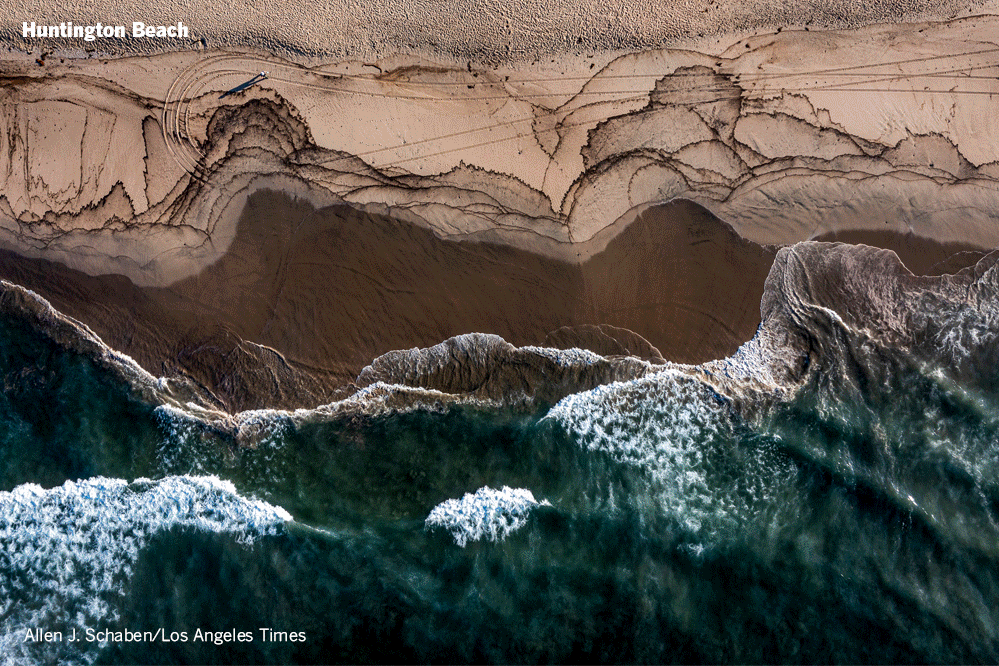How the Orange County oil spill compares to those of Santa Barbara, Exxon Valdez and others

- Share via
The full scope of this weekend’s oil spill in Orange County remains unclear. But the leak of at least 126,000 gallons of crude oil is one of the largest in recent years in California. However, the size is still far less than several other catastrophic spills in the state and elsewhere.
Oil from the spill reached some marshes and wetland areas Sunday. A day later, it was moving south toward the sensitive coves around Laguna Beach.
For the record:
6:50 p.m. Oct. 4, 2021An earlier version of this article incorrectly credited the American Trader spill map to AP. It’s by Paul Duginski of The Times.
The overall impact is still hard to assess at this point. But the amount of dumped oil is still only a small fraction of the worst spills in history. The National Oceanic and Atmospheric Administration has been tracking spills since a 1969 Santa Barbara incident.
Here is a look at some past oil spills in California and beyond:
California
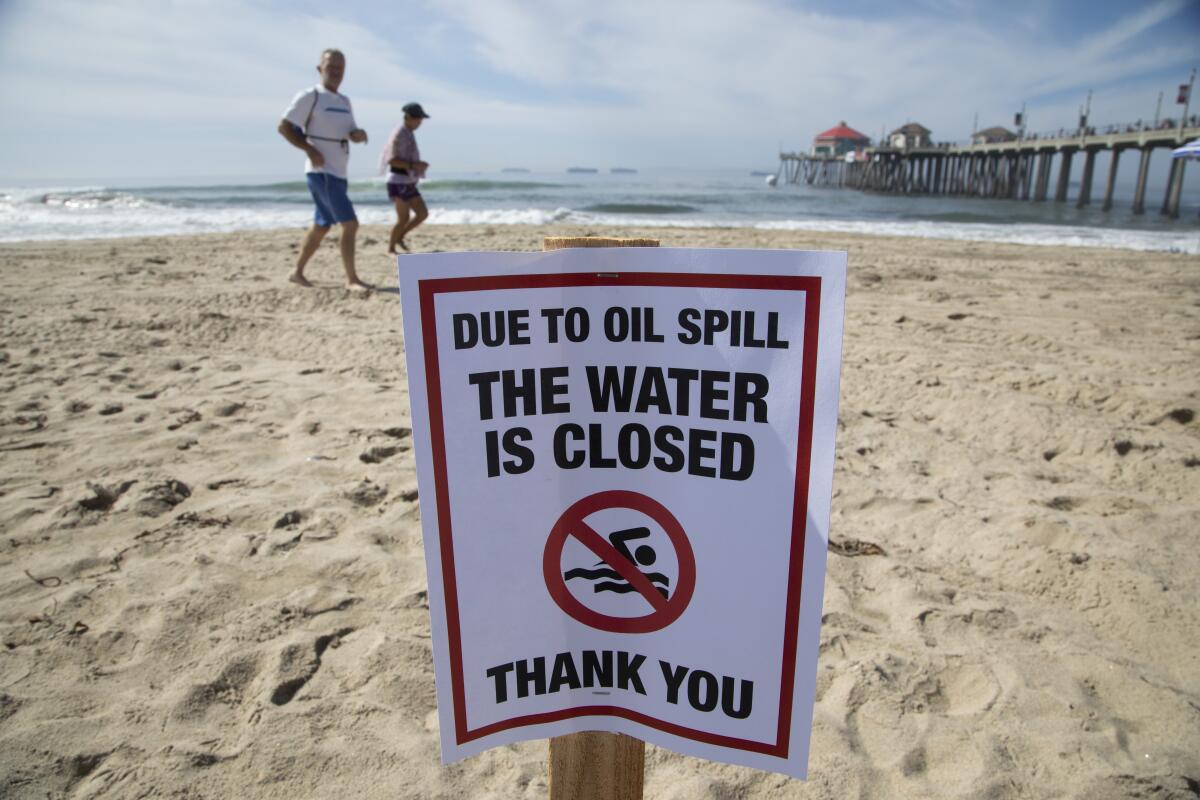
1969: Santa Barbara
The Santa Barbara oil spill of 1969 spewed an estimated 3 million gallons of crude oil into the ocean, creating a slick 35 miles long along California’s coast and killing thousands of birds, fish and sea mammals.
Following that spill, the region became ground zero for some of the most significant conservation efforts of the 20th century.
The Santa Barbara spill was the worst in the nation’s history — until 20 years later, when the Exxon Valdez dumped 11 million gallons of crude off the coast of Alaska.
1971: San Francisco Bay Area
Two tankers collided in heavy fog, sending 800,000 gallons of oil into the water. Thousands of birds died.
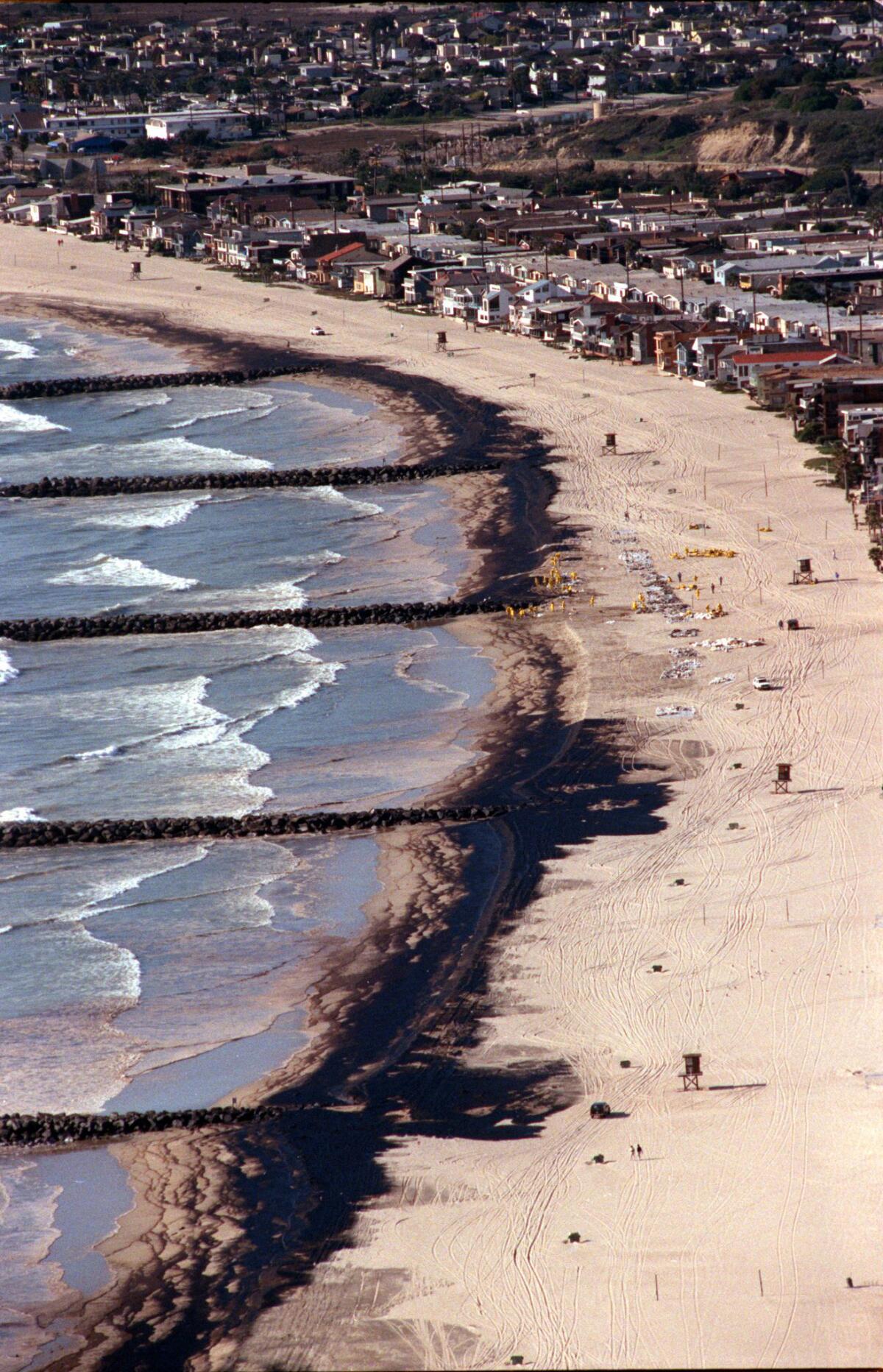
1990: American Trader
On the afternoon of Feb. 7, 1990, the oil tanker American Trader ran over its anchor in relatively shallow water off Huntington Beach, spilling nearly 417,000 gallons of crude and fouling popular beaches along the Orange County coast. The oil killed fish and about 3,400 birds.
The American Trader, an 800-foot tanker leased by British Petroleum, struck its port anchor while riding in heavy swells about 7,200 feet off Huntington Beach. It was engaged in a complicated berthing maneuver that involved backing into a mooring where it would be secured to seven anchor buoys, then connected to an underwater pipeline to offload oil to a terminal near Newland Street operated by Golden West Refining Co.
As the loaded tanker heaved up and down on the swells, it most likely came down on its own anchor, rupturing the hull and ultimately leaking 416,598 gallons of crude oil into the Pacific. The oil blackened 15 miles of Orange County beaches and threatened environmentally sensitive wetlands.
The American Trader’s voyage began in Valdez, Alaska, where it took on a cargo of crude bound for oil-storage barges at the Port of Long Beach. The tanker arrived Jan. 29 and made stops in Long Beach’s harbor to unload oil. After that, it took on a new, 23-million-gallon load of oil from a supertanker moored off Long Beach.
It left Long Beach at 1 p.m. on Feb. 7 and headed south for the Golden West Offshore Mooring off Huntington Beach. There it was to offload 12.5 million gallons of oil to be piped to a refinery in Santa Fe Springs.
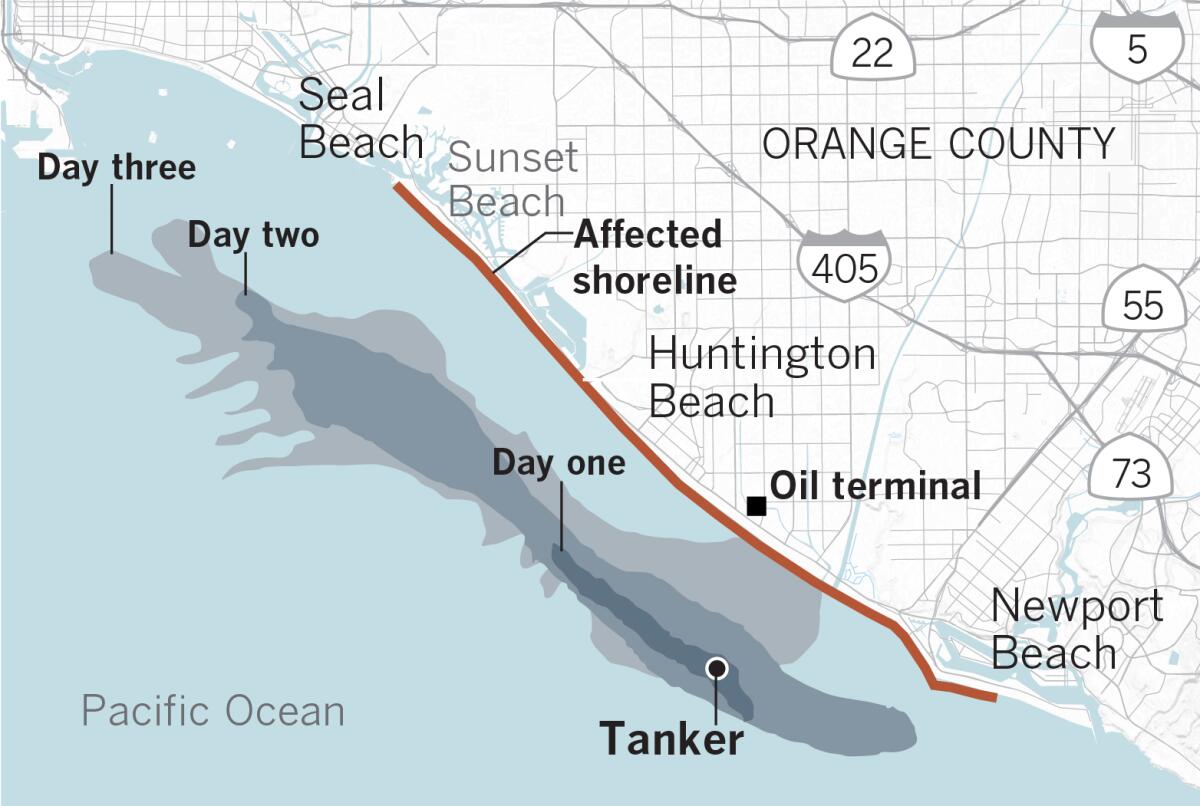
After the spill, crews rushed to contain the oil slick and protect the beaches, but winds and currents eventually deposited oil on miles of beach. Rubberized booms were put in place to keep oil out of estuaries such as the Bolsa Chica wetlands and Upper Newport Bay.
While the oil largely skirted the coastal wetlands, locals found the spill depressing and frustrating, not only because of the catastrophic environmental damage, but because of the effect on local businesses.
2007: San Francisco Bay Area
The cargo ship Cosco Busan struck the San Francisco-Oakland Bay Bridge in heavy fog and poured 58,000 gallons of fuel oil into the bay, killing more than 6,800 birds.
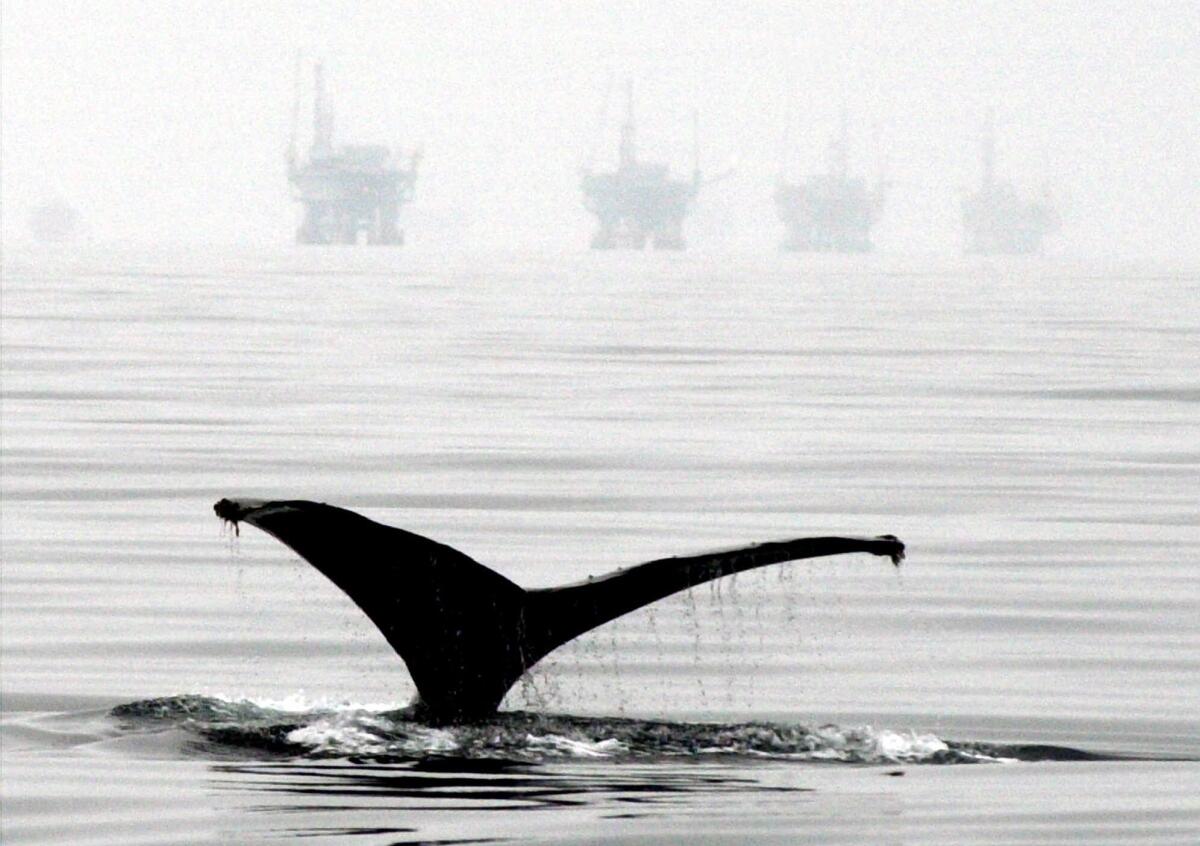
2015: Santa Barbara
An oil pipeline ruptured north of Santa Barbara and sent 143,000 gallons of crude oil flowing onto Refugio State Beach, with some of it reaching the ocean. Tar balls from the leak floated as far away as Manhattan Beach.
That spill forced the closure of Refugio and El Capitan state beaches and covered rocky shores, sandy beaches and kelp forests with oil. According to the Oiled Wildlife Care Network, which was involved in recovery efforts, 204 birds and 106 marine mammals died as a result of the spill.
The oil likely will continue to encroach on Orange County beaches for the next few days, officials said.
National
Here is a summary of some other major spills compiled by the National Oceanic and Atmospheric Administration:
Deepwater Horizon oil spill
On April 20, 2010, an explosion on the Deepwater Horizon Macondo oil well drilling platform killed 11 workers and started the largest marine oil spill in U.S. history, releasing millions of barrels of oil into the Gulf of Mexico.
Exxon Valdez oil spill
On March 24, 1989, the tanker Exxon Valdez grounded on Bligh Reef in Alaska’s Prince William Sound, rupturing its hull and spilling nearly 11 million gallons of Prudhoe Bay crude oil.
More to Read
Sign up for Essential California
The most important California stories and recommendations in your inbox every morning.
You may occasionally receive promotional content from the Los Angeles Times.
